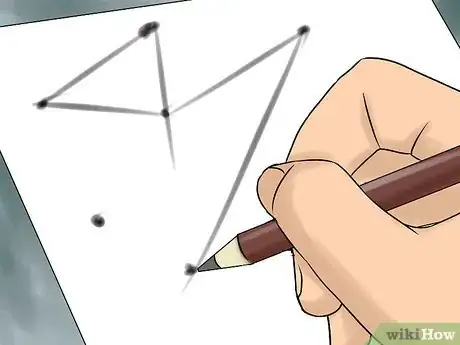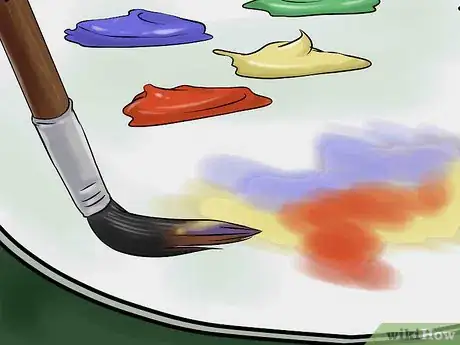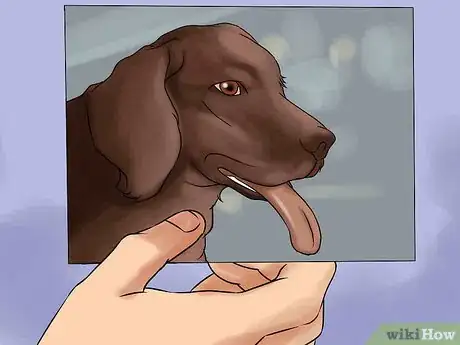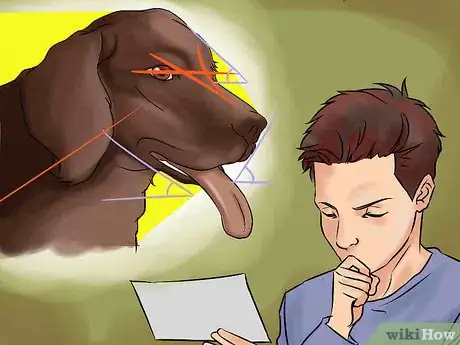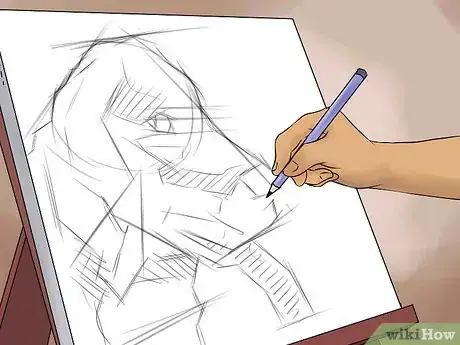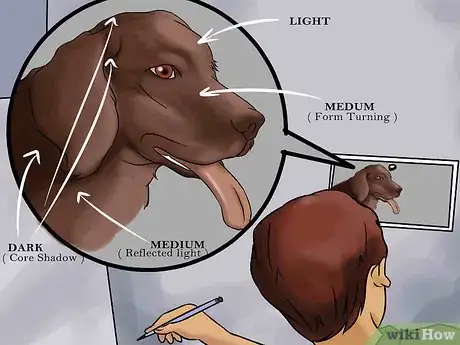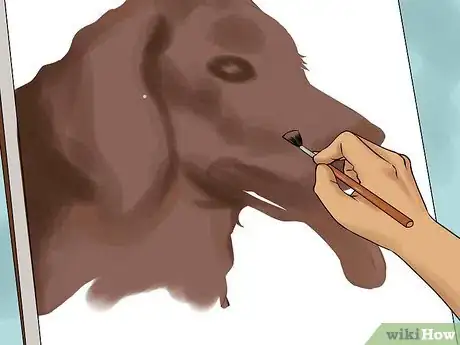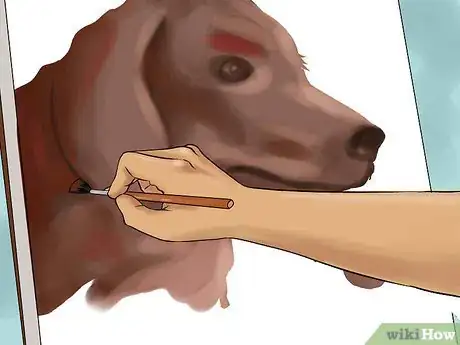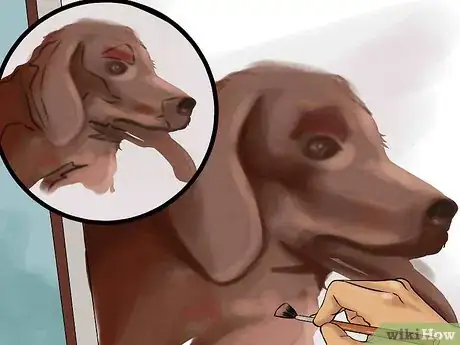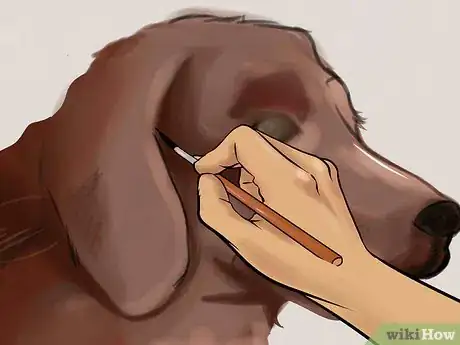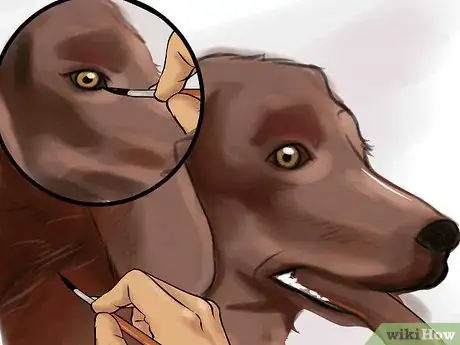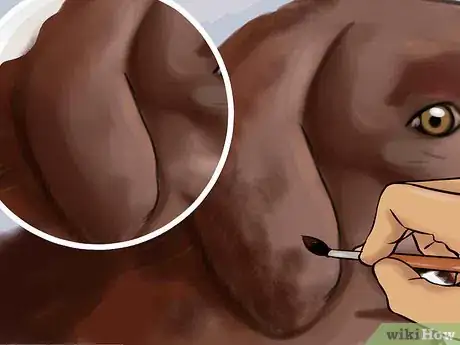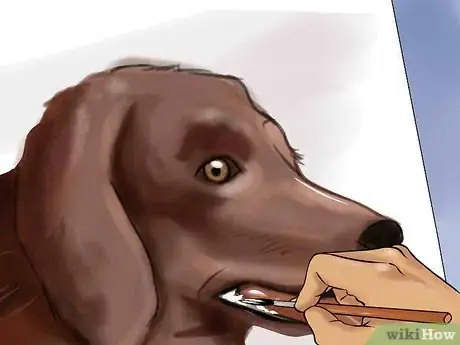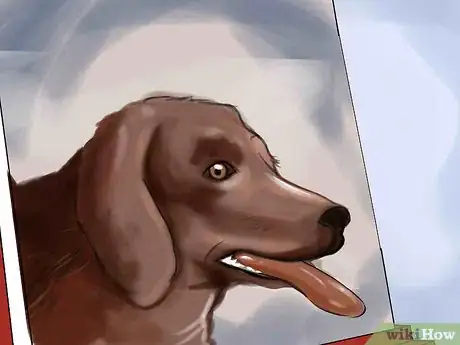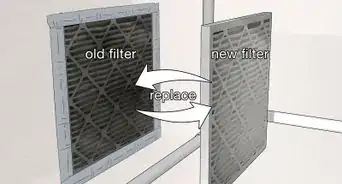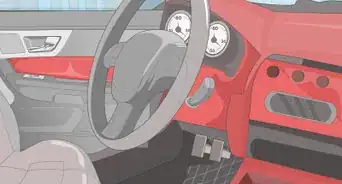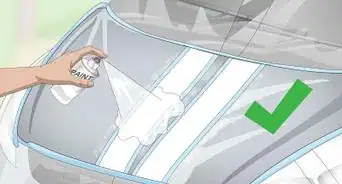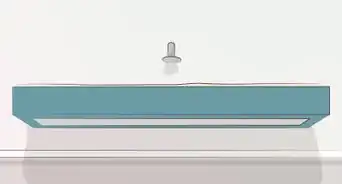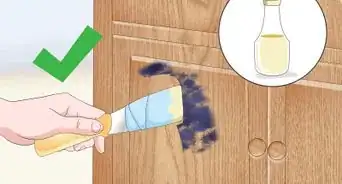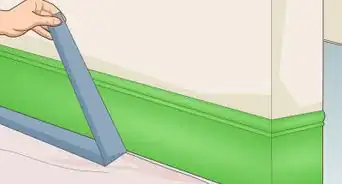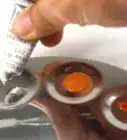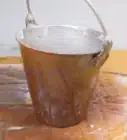X
wikiHow is a “wiki,” similar to Wikipedia, which means that many of our articles are co-written by multiple authors. To create this article, 16 people, some anonymous, worked to edit and improve it over time.
This article has been viewed 100,220 times.
Learn more...
Painting a dog portrait can be a challenging endeavor for a beginner, but very rewarding when you can capture your dog's individual personality. This tutorial will guide you through the process of painting any breed of dog.
Steps
Part 1
Part 1 of 6:
Warm-Up Exercises
-
1Practice drawing straight lines. Take a piece of paper and draw randomly spaced dots around the edges. Practice drawing straight lines between all the dots––this will come in handy when you are finding the proportions and placing the features of the dog’s head.
-
2Practice color mixing. Use a simple computer painting program to print out a sheet of small, randomly-colored squares. Mix small portions of these colors as accurately as you can with your chosen opaque paint.
- Even if you work digitally, buy some cheap paints and practice mixing. Being able to identify the mixing components of a color is extremely helpful for matching the colors of your subject.
- If you are doing opaque painting, you need to try coloring on the actual material that you want to paint on. This will allow you to foresee how the material absorbs and paints diffuse which can help you to create different effects.
Advertisement
Part 2
Part 2 of 6:
Sketching
For precise help on drawing actual dog features, see further How to draw a dog. The following sections outlines the generalities involved in sketching before painting.
-
1Choose a reference image. Creating a painting that looks three-dimensional is easier if you can accurately judge the forms of your subject. Good lighting is a key factor to doing this well.
- Choose a reference image that features a single, strong, direct light source that creates a clear separation of light and shadow. You can identify a direct light source by looking for hard-edged cast shadows.
- A simple, uniform background makes it easier to see the outline of the subject.
-
2Map out the proportions of your subject. Ensure that the proportions of your painted subject are correct by mapping out key features in the reference for comparison.
- Look for major lines of action (red lines) such as the center line of the head or the tilt of the eyes. When sketching in other features, compare their placement and orientation to these lines.
- Note the angles (blue lines) that parts of the head make with each other - these angles remain the same regardless of the size of your painting. Pick out spots that are easy to keep track of, such as the points of the ears, the nostrils, and hard corners where the jaw and collar overlap with the neck.
- Negative space (yellow area) is the shape created by the area around the subject. In many cases, negative space is far simpler and easier to judge than the shapes inside the subject.
-
3Sketch the under-structure. Begin by drawing the major lines of action.
- Draw straight lines between the key features, making sure the angles are accurate.
- Using simple lines makes it easy to adjust proportions before drawing in more complicated forms.
- Resist drawing small details and focus instead on correctly placing the biggest forms.
- The sketch should show accurate proportions. Keep adjusting your guidelines until all the forms are the correct size.
Advertisement
Part 3
Part 3 of 6:
Underpainting
-
1Identify basic light, medium, and dark value areas in the reference. Understanding how light is hitting your subject is the most important factor in making your painting look three-dimensional. Light value areas are most directly facing the light source. There are two types of medium value areas:
- Planes of the form that are turning away from the light and about to go into shadow.
- Light is bouncing off of objects behind the subject and hitting them from the opposite side, but much less strongly than the direct light. This is called “reflected light.”
- Dark value areas are where the least amount of light is shining on the subject because the planes of the form are tangent to the light sources, so they aren’t getting light from either the front or back. They occur between medium value areas and are called “core shadows."
-
2Paint in the basic values on your under-structure sketch.
- Mix 4 neutral (gray) values: light, medium, dark and a background value. Don’t try to perfectly match any values because this under-painting will be completely covered by the final colors. The different value areas are only an organizational tool.
- Apply the values using the sketch as a guide. Working with only four values makes this step simple and fast.
- Use a large brush.
- If you have trouble placing the medium values, try painting only light and dark first before adding medium.
- Step back 10 feet/3 meters from the painting to get an overall impression. The painting should begin look like a three-dimensional form with light shining on it.
Advertisement
Part 4
Part 4 of 6:
Color
-
1Start applying color using your under-painting as a guide. This is where the painting begins to really look like the dog reference. Using the reference for comparison, mix colors for each value section defined by your under-painting, and lay in the colors within the pre-mapped areas with a large brush.
- After the biggest areas are painted, layer on additional colors, but keep using the large brush.
-
2Identify large plane boundaries in the reference and sketch them into the painting as a guide. With all the large shapes in place, switch down to a medium brush and start refining the edges of major forms, such as the jaw and large skin creases.
- It may be useful to sketch guidelines into the painting, as they can easily be covered up with a new layer.
- Step back 10 feet/3 meters from the painting. The illusion of light should be very strong. You might forget the shadows are only painted.
Advertisement
Part 5
Part 5 of 6:
Adding the Details
-
1Add detail to the nose and mouth. As with the rest of the body, the tongue and nose can be broken down into larger planes to plan out the form. Once you have them looking as if light is shining on them, go in with even finer details.
- To make the snout look wet, look at your reference for the placement of small, bright, hard highlights. These are called “specular reflections”. They occur where the light source is being completely reflected off the surface.
-
2Add detail to the eyes. Note that the “white” of the eye is rarely white under normal lighting conditions because it is recessed into the head and cast into shadow by the skin around it. Capturing these shadows is the key to making the eye appear to be set in the face and not just painted on the surface.
- Small, bright specular highlights give the eye a glassy sparkle.
-
3Add detail to the ears. The ears are composed of a few large planes that turn up at the edges.
- Be sure to establish the forms before adding graphic elements like spots, and remember that the spots are affected by the light and shadow of the plane they are on as well.
-
4Continue adding details until you're satisfied with the results.
Advertisement
Community Q&A
-
QuestionI want to paint an acrylic portrait of a dog. It's a Papion with large, very hairy ears. How should I do the ears?
 Wikihow8881Community AnswerYou can create the illusion of fur on a painting by doing lots of small thin stokes overlapping each other, or do thick dots on top of each other.
Wikihow8881Community AnswerYou can create the illusion of fur on a painting by doing lots of small thin stokes overlapping each other, or do thick dots on top of each other.
Advertisement
Things You'll Need
- Opaque paint (such as acrylic, oil, or gouache) or a digital painting software (such as Adobe Photoshop, Corel Painter, Paint Tool Sai, etc)
- Brushes
- Chipboard or canvas
References
- http://www.deviantart.com/art/Dog-Stock-127-265552129 Reference photos by Crevan Night, used with permission.
About This Article
Advertisement
